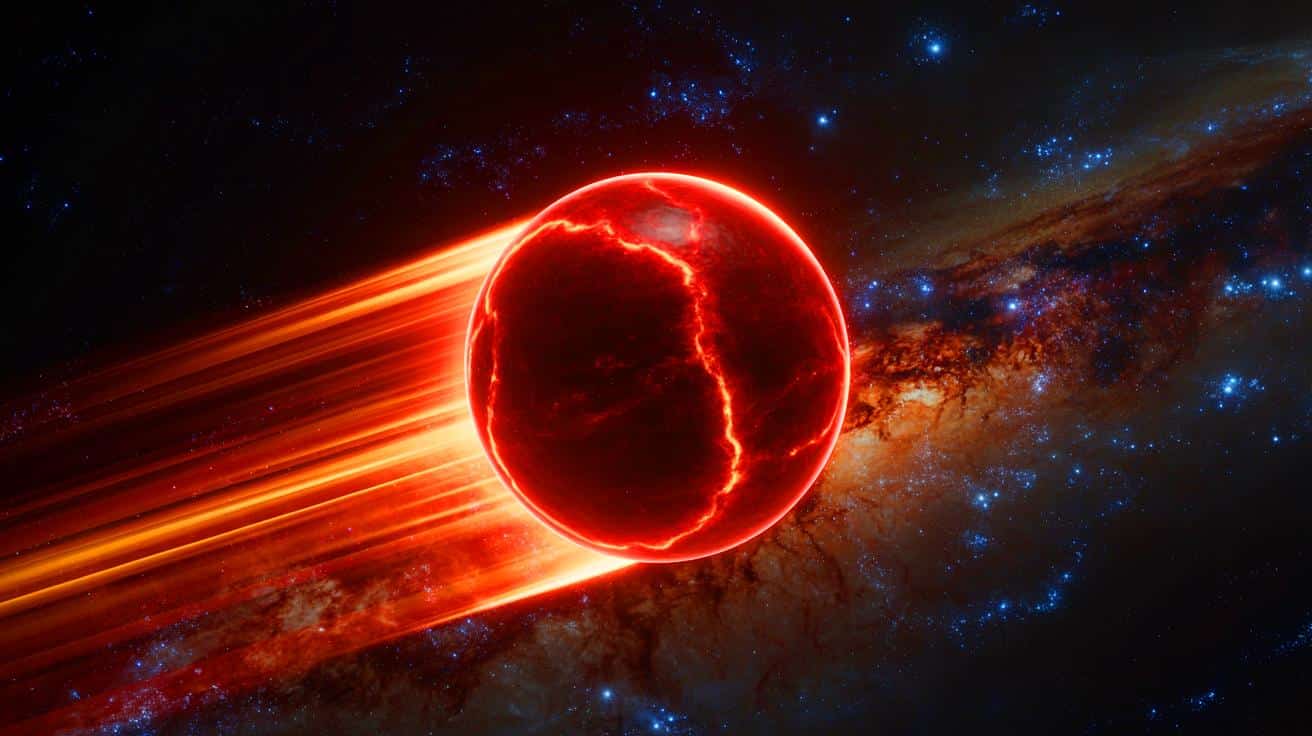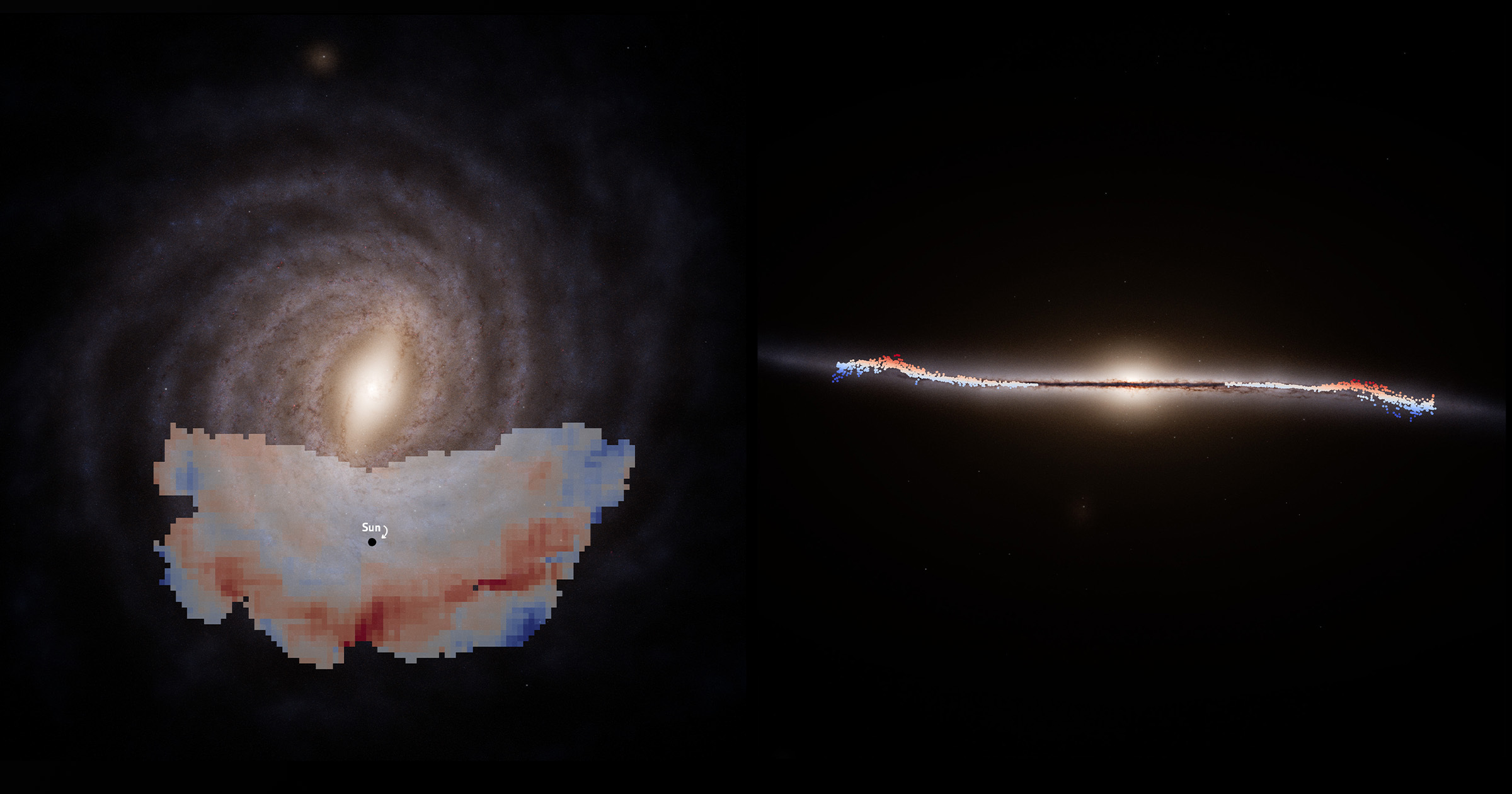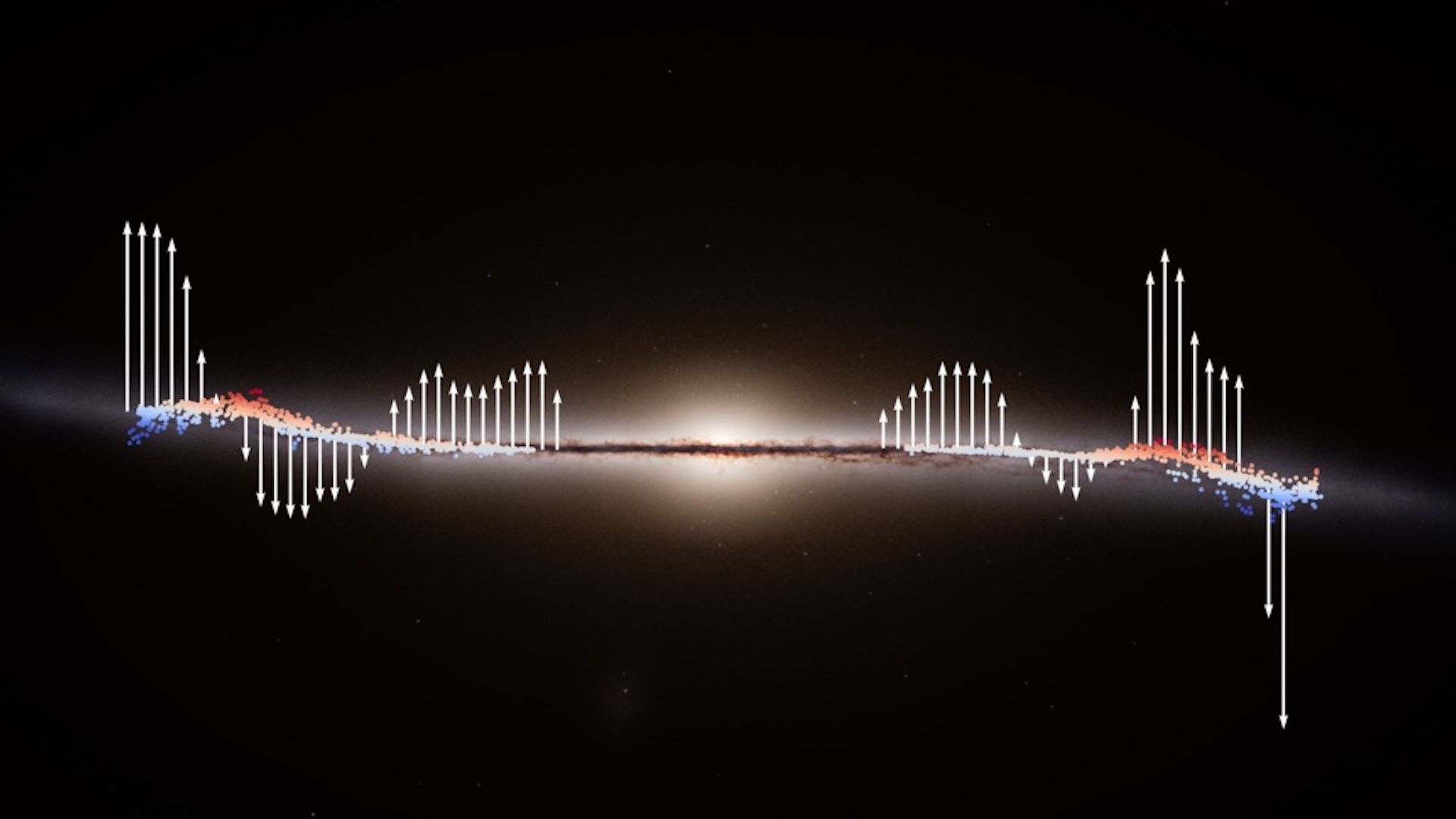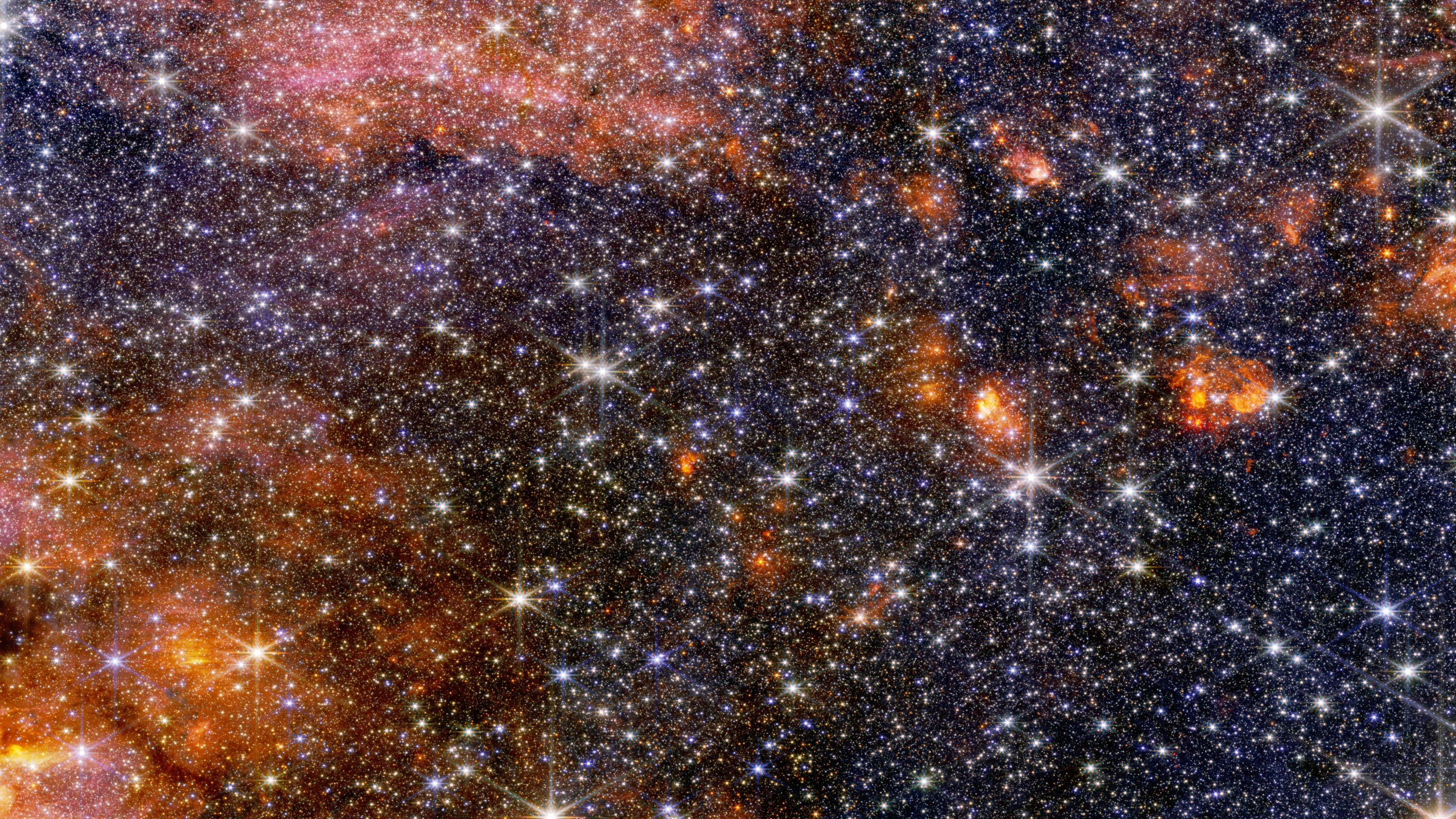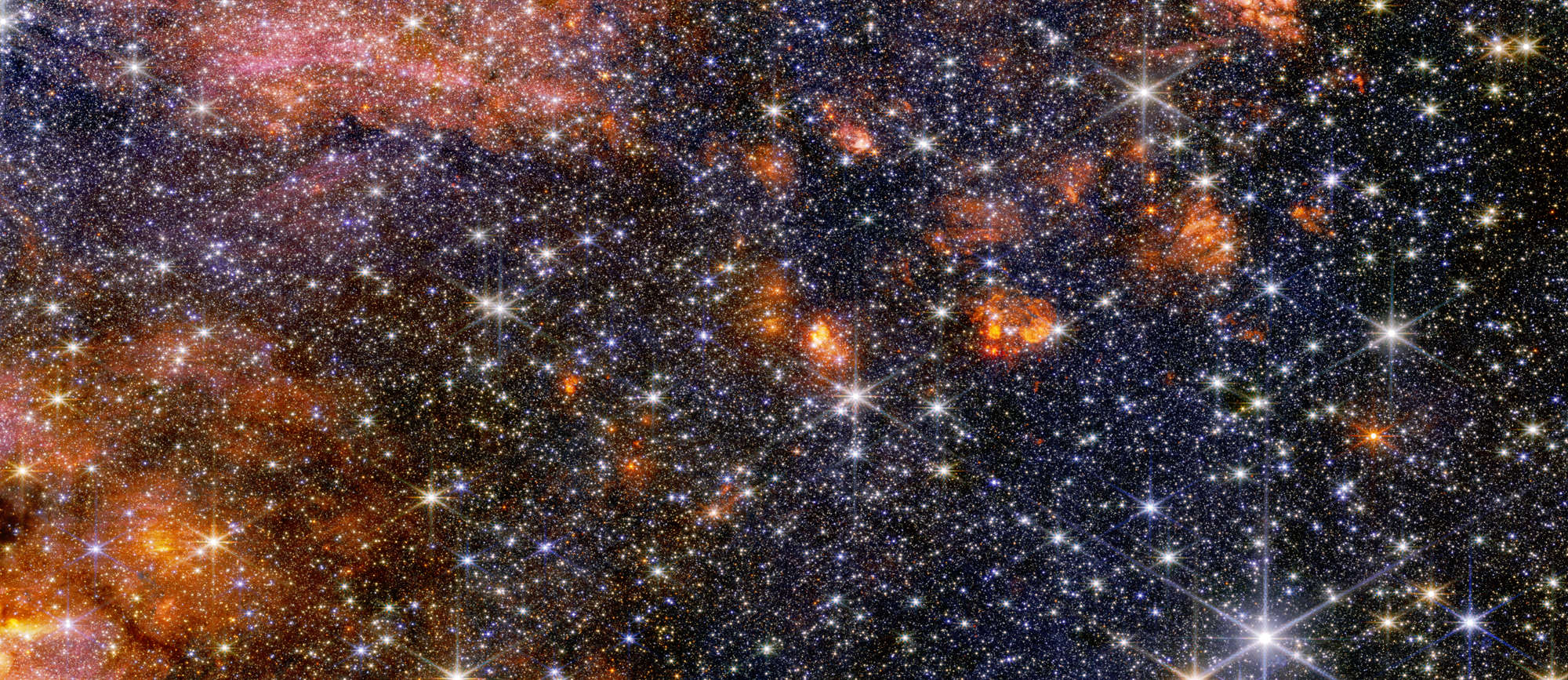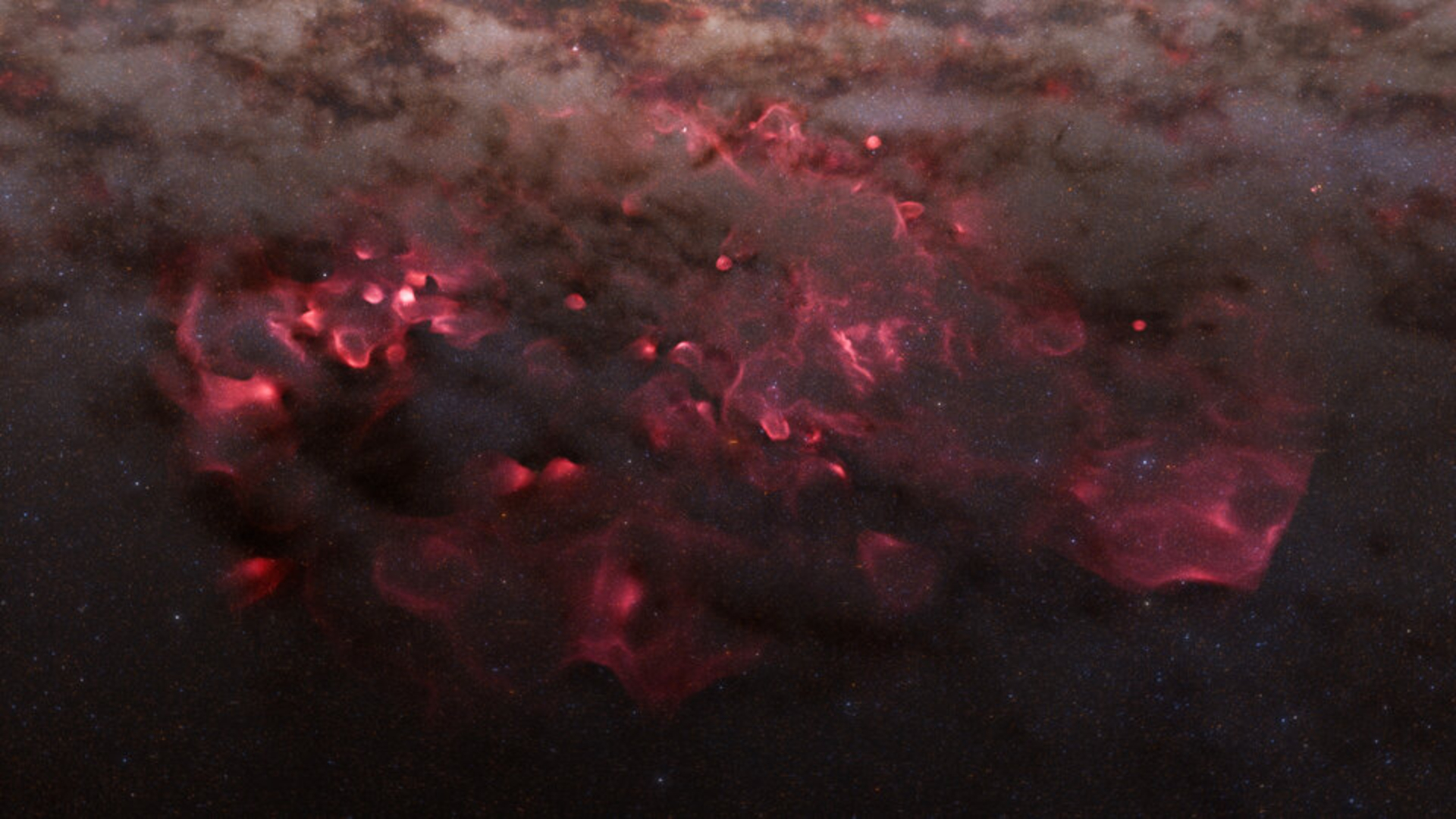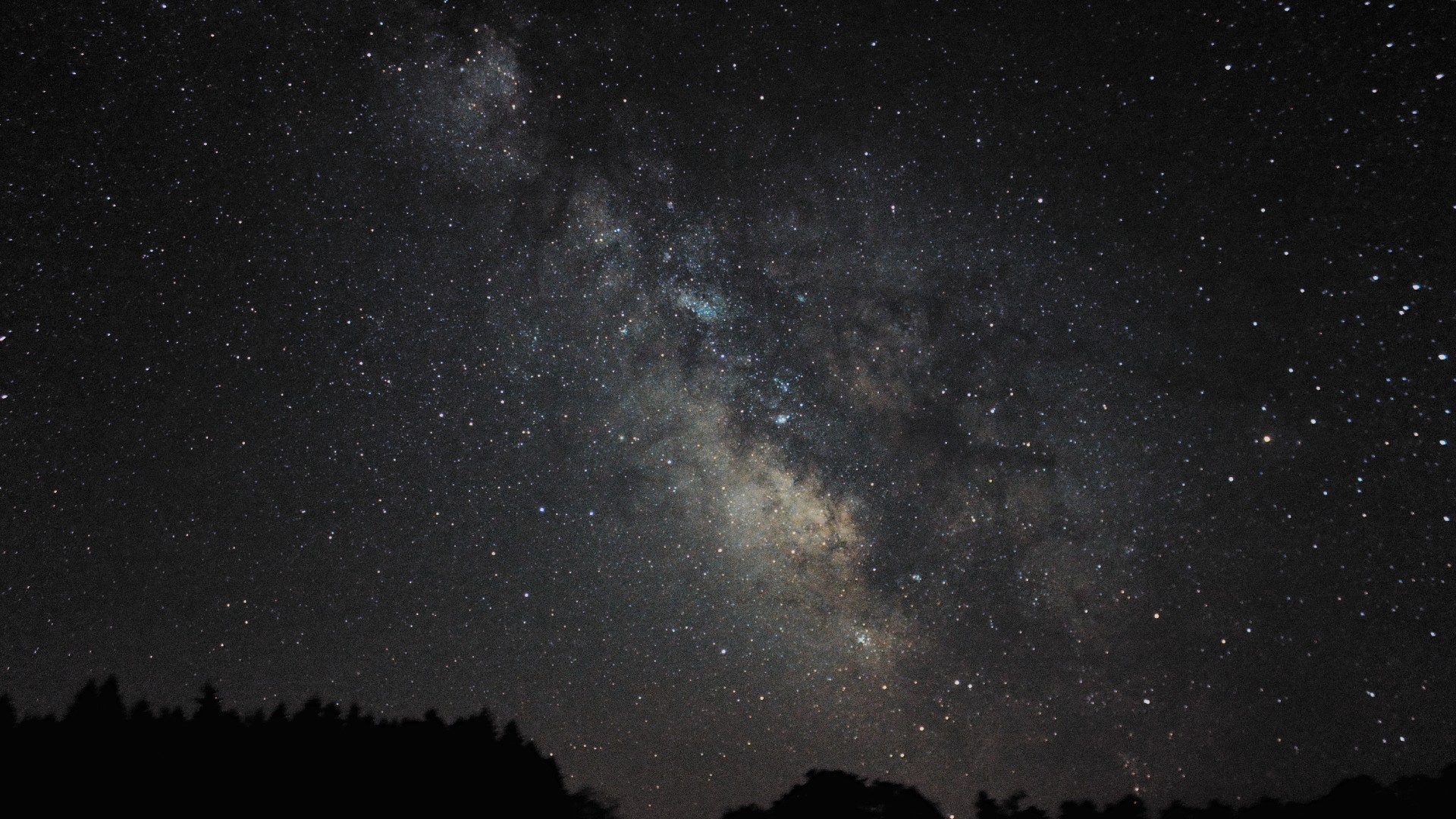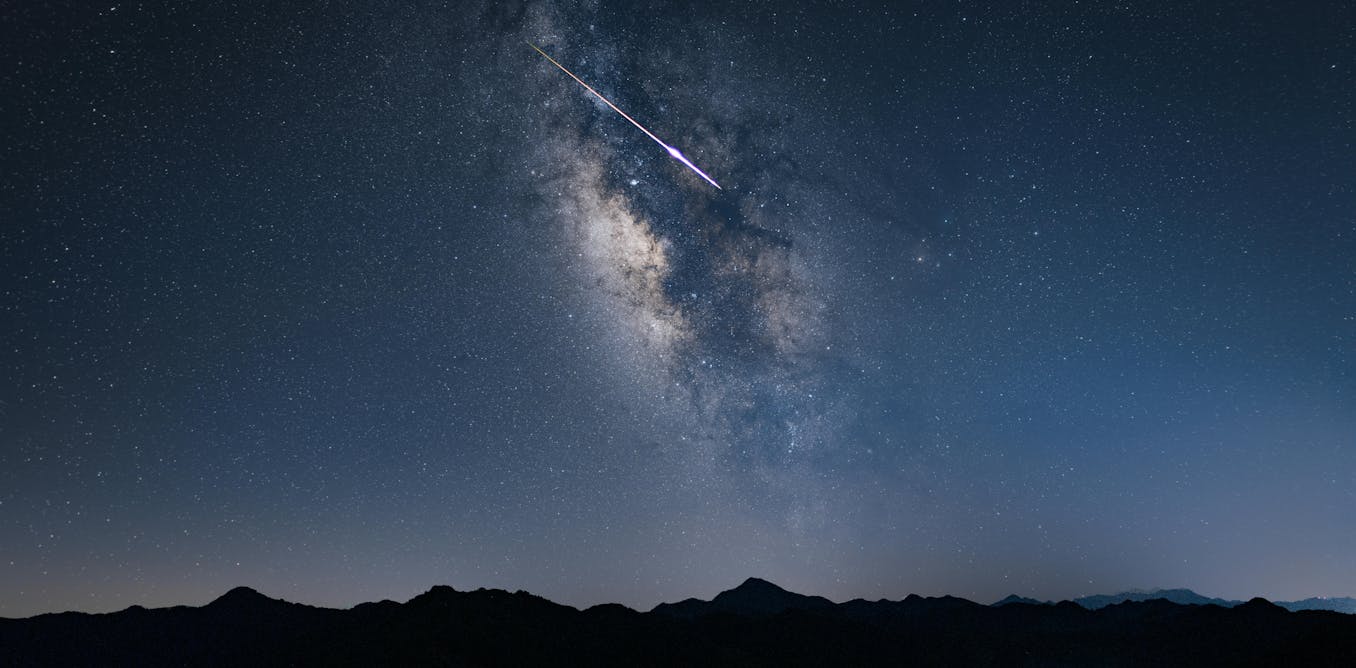IN A NUTSHELL 🌌 Citizen scientists helped NASA discover a high-speed sphere escaping our galaxy. 🔭 The sphere, named CWISE J1249, travels at an astonishing 1 million miles per hour. ⚖️ CWISE J1249 is too large for a planet and too small for a star, challenging existing classifications. 🌀 Theories suggest its speed could be due to a supernova kick …
Read More »Tag Archives: Milky
The Milky Way has a Colossal Wave Rippling Through It, Astronomers Say
ESA/Gaia/DPAC, S. Payne-Wardenaar, E. Poggio et al (2025) The Milky Way galaxy is like a gigantic ocean gyre or eddy that spins and wobbles around its center. But our home galaxy also has a colossal wave rippling through it, pulling and pushing an ocean of stars and cosmic dust in its wake, according to newly released images from the European …
Read More »Astronomers discover a ‘Great Wave’ spreading across the Milky Way in new map of thousands of stars
A huge “wave” is rippling through our galaxy, pushing billions of stars in its wake, a new study reveals. The Milky Way‘s galactic wave was spotted in mapping data from the European Space Agency‘s (ESA) Gaia space telescope, which charted the positions and movement patterns of millions of stars with high accuracy before retiring earlier this year. Like ripples in …
Read More »James Webb Space Telescope reveals thick cosmic dust of Sagittarius B2, the most most enormous star-forming cloud in the Milky Way — Space photo of the week
Quick facts What it is: Sagittarius B2 (Sgr B2) molecular cloud Where it is: 25,000 light-years from Earth in the constellation Sagittarius When it was shared: Sept. 24, 2025 Why it’s so special: Stars in the Milky Way galaxy are born in huge molecular clouds. The most massive is Sagittarius B2, which is just a few hundred light-years from our …
Read More »James Webb Space Telescope peers deep into the heart of star formation in our Milky Way galaxy
A maelstrom of star formation close to the center of our galaxy has been revealed in two different wavelengths by the James Webb Space Telescope (JWST), its beautiful images highlighting the intensity of star-birth in the region and deepening the mystery of why star formation at the very heart of our galaxy is so sluggish. Sagittarius B2 is a dense …
Read More »NASA’s Webb Explores Largest Star-Forming Cloud in Milky Way
NASA’s James Webb Space Telescope has revealed a colorful array of massive stars and glowing cosmic dust in the Sagittarius B2 molecular cloud, the most massive and active star-forming region in our Milky Way galaxy. “Webb’s powerful infrared instruments provide detail we’ve never been able to see before, which will help us to understand some of the still-elusive mysteries of …
Read More »Zoom through the Milky Way’s stellar nurseries in this super-detailed 3D map (video)
Astronomers have unveiled the most detailed 3D map ever made of stellar nurseries in our Milky Way galaxy. Using data from the European Space Agency‘s (ESA) Gaia space telescope, astronomers constructed the first-ever 3D view of star-forming regions that are otherwise hidden by thick clouds of gas and dust, making it difficult to measure their true distances. A new video …
Read More »Don’t miss the beautiful summer Milky Way next week as the new moon goes dark on Sept. 21
The moon is at new phase on Sept. 21 and during this upcoming week will appear first as a gradually diminishing crescent of light in the predawn hours, and during next week as a slender sliver of light in the early evening skies, and won’t be much of a hindrance at all to stargazing. This combined with the fact that …
Read More »Tiny crystals in Earth’s crust have captured the movement of the Milky Way’s spiral arms
When most of us think about what shaped our planet, we probably picture volcanoes, earthquakes, and huge continents slowly drifting apart (or back together again) over millions or billions of years. We also know meteorite impacts were important; our crater-packed Moon is clear evidence of that. But what if Earth’s geological story was also written further afield in the stars …
Read More »Take a 3D flight through our Galaxy and see it from above. New map shows what the Milky Way looks like from the outside
How is it possible to know what our Milky Way Galaxy looks like, when we’re inside it? How could we ever hope to see it from the perspective of a distant observer, when we’re just a tiny speck orbiting a single star in a galaxy of up to 400 billion stars? Credit: ESA/Gaia/DPAC; CC BY-SA 3.0 IGO The European Space …
Read More »